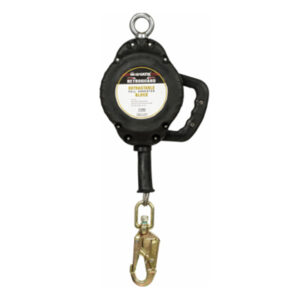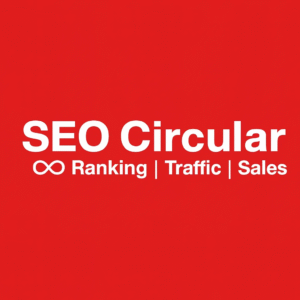Introduction
Small and medium-sized enterprises (SMEs) in New Zealand are increasingly exploring solar energy to reduce electricity costs, improve sustainability, and enhance brand reputation. However, investing in solar power requires careful planning and financial analysis to ensure maximum returns.
A solar CAPEX model is one of the most effective tools for SMEs to understand project costs, evaluate financial viability, and make informed investment decisions. In this blog, we’ll explore what a CAPEX model is, why it’s critical for SMEs, and how businesses can use it to optimize solar investments.
What Is a Solar CAPEX Model?
CAPEX stands for Capital Expenditure, which refers to the upfront investment required to set up a solar project. A solar CAPEX model is a financial framework that estimates all capital costs, including:
-
Solar panels and inverters
-
Mounting structures and electrical components
-
Installation and labor costs
-
Land or rooftop preparation
-
Engineering, procurement, and construction (EPC)
-
Permits, regulatory approvals, and contingency
The model provides a clear picture of total investment, projected energy savings, payback periods, and return on investment (ROI). For SMEs, this clarity is crucial for deciding whether a solar project is financially viable.
Why CAPEX Modelling Is Important for SMEs
SMEs often have limited budgets and resources, making it essential to carefully evaluate investments. CAPEX modelling helps in multiple ways:
1. Accurate Budgeting
A CAPEX model details every expense upfront, ensuring SMEs know exactly how much capital is needed. This prevents unexpected costs and financial surprises during project execution.
2. Financial Feasibility
The model calculates critical metrics such as payback period, net present value (NPV), and internal rate of return (IRR). These figures help SMEs assess whether the solar project will provide a good return on investment.
3. Risk Mitigation
By analyzing cost drivers and potential risks, CAPEX modelling enables SMEs to anticipate challenges and plan accordingly. For example, identifying fluctuating equipment prices or labor costs in advance helps reduce financial risk.
4. Access to Funding
Banks, investors, and financial institutions are more likely to support solar projects backed by a comprehensive CAPEX model, as it demonstrates financial planning and project viability.
Key Components of a Solar CAPEX Model
A detailed CAPEX model includes multiple cost components, which are critical to understanding the total investment and projected returns.
1. Equipment Costs
-
Solar Panels: Cost depends on efficiency, type, and wattage.
-
Inverters: Convert DC to AC electricity; selection impacts efficiency and reliability.
-
Mounting Systems: Fixed or tracking systems depending on rooftop or ground installations.
2. Installation and Labor
Labor costs cover site preparation, electrical work, and system commissioning. Local rates and project complexity influence these expenses.
3. Land or Rooftop Costs
For SMEs with rooftop space, structural assessments or reinforcements may be required. Ground-mounted systems may involve leasing or land acquisition costs.
4. Regulatory and Permitting Costs
Obtaining approvals and complying with regulations is necessary for smooth project execution.
5. Contingency
A contingency (usually 5–10%) is included to cover unforeseen expenses such as delays or equipment changes.
How SMEs Can Use CAPEX Modelling to Maximize Returns
A CAPEX model is not just a budgeting tool—it’s a strategic guide to maximize ROI. Here’s how SMEs can leverage it:
1. Optimize System Size and Design
By modelling different system sizes and configurations, SMEs can identify the optimal balance between energy generation, upfront costs, and payback period.
2. Compare Suppliers and Equipment
CAPEX modelling provides clarity on cost components, helping SMEs negotiate with suppliers for better pricing or warranties.
3. Evaluate Financing Options
CAPEX models allow SMEs to compare self-financing, loans, or leasing arrangements, choosing the option that minimizes upfront costs while maximizing returns.
4. Scenario Analysis
SMEs can test “what-if” scenarios using a CAPEX model:
-
What if electricity tariffs rise or fall?
-
What if equipment prices change?
-
How does altering system size affect payback?
This scenario planning ensures better decision-making and risk management.
5. Align with Incentives
New Zealand offers various incentives for renewable energy adoption, including grants and tax benefits. Incorporating these into your CAPEX model can significantly improve ROI.
Example: CAPEX Modelling for a Small Business
Consider a small bakery in Wellington planning a 50 kW rooftop solar installation:
-
CAPEX: NZ$90,000
-
Expected annual savings: NZ$15,000
-
Project lifespan: 25 years
Using a CAPEX model, the bakery can calculate:
-
Payback period: 6 years
-
Net Present Value (NPV): NZ$120,000
-
Internal Rate of Return (IRR): 13%
Scenario analysis might show that upgrading to slightly higher-efficiency panels increases CAPEX to NZ$95,000 but reduces payback to 5.5 years and boosts NPV. This demonstrates how CAPEX modelling helps SMEs optimize solar investments.
Tools and Services for CAPEX Modelling
Several tools and services can assist SMEs in creating accurate CAPEX models:
-
Excel or Google Sheets: Simple yet effective for small-scale projects.
-
Dedicated Software: Tools like HOMER Pro, PVsyst, and Aurora Solar offer detailed modelling capabilities.
-
Consulting Agencies: A professional solar CAPEX modelling agency can provide expertise, ensure accuracy, and incorporate financing options and incentives.
Partnering with experts ensures SMEs avoid common mistakes, reduce risk, and maximize returns.
Benefits of CAPEX Modelling for SMEs
-
Clarity on Investment Needs: Understand exactly how much capital is required.
-
Optimized ROI: Test different configurations and financing strategies to maximize returns.
-
Risk Reduction: Identify potential cost overruns or risks before committing funds.
-
Better Financing Options: Present a professional financial plan to banks or investors.
-
Long-Term Planning: Plan for maintenance, warranties, and energy savings over the project lifespan.
Conclusion
For SMEs in New Zealand, solar energy presents an opportunity to reduce costs, enhance sustainability, and strengthen brand reputation. However, without proper financial planning, solar projects can face unforeseen costs and delays.
A solar CAPEX model provides the clarity, strategy, and confidence needed to make informed investment decisions. By accurately forecasting costs, evaluating financing options, and testing scenarios, SMEs can maximize ROI and ensure their solar projects are successful for years to come.
Partnering with a solar CAPEX modelling agency can simplify the process, providing expert guidance and helping small businesses unlock the full potential of solar energy.


